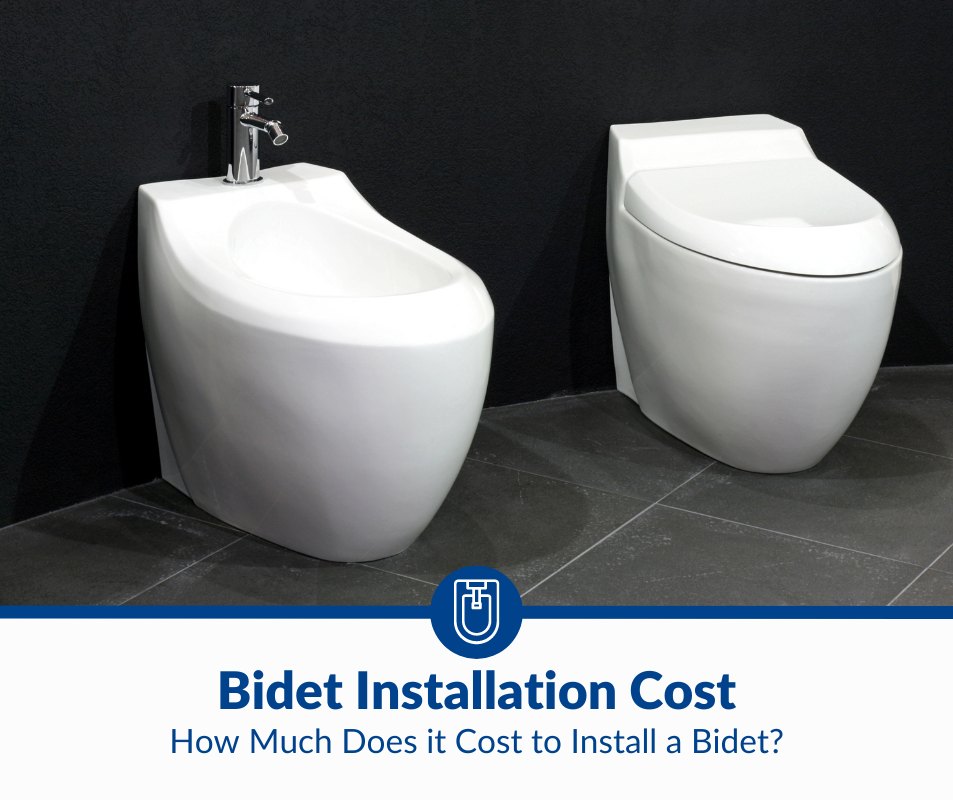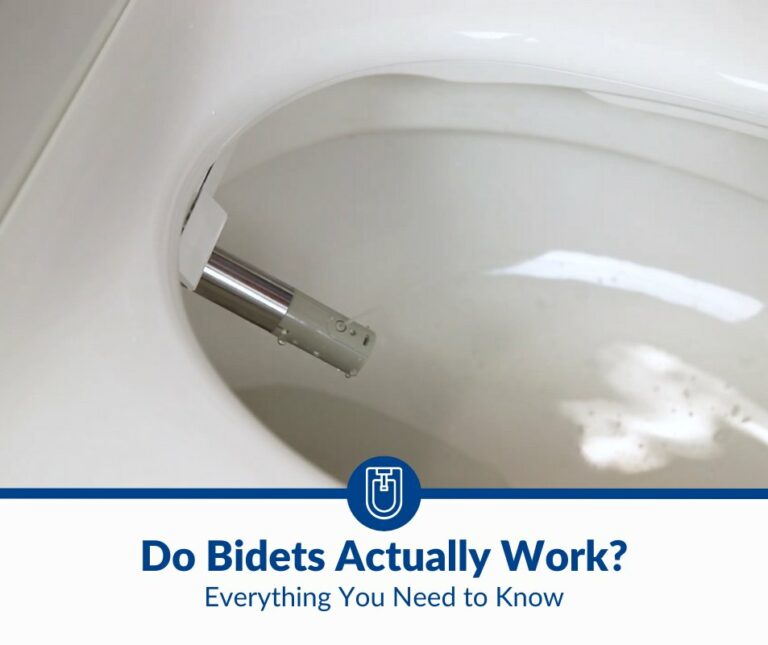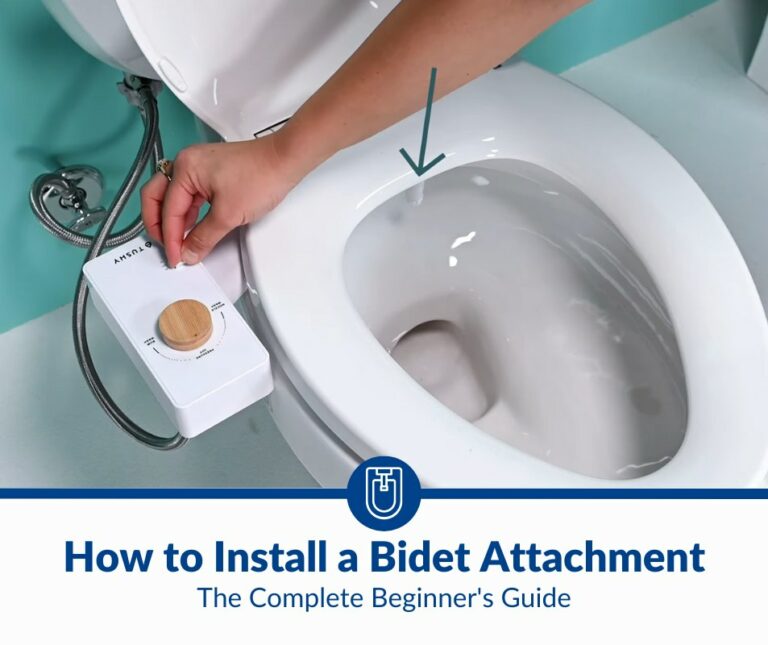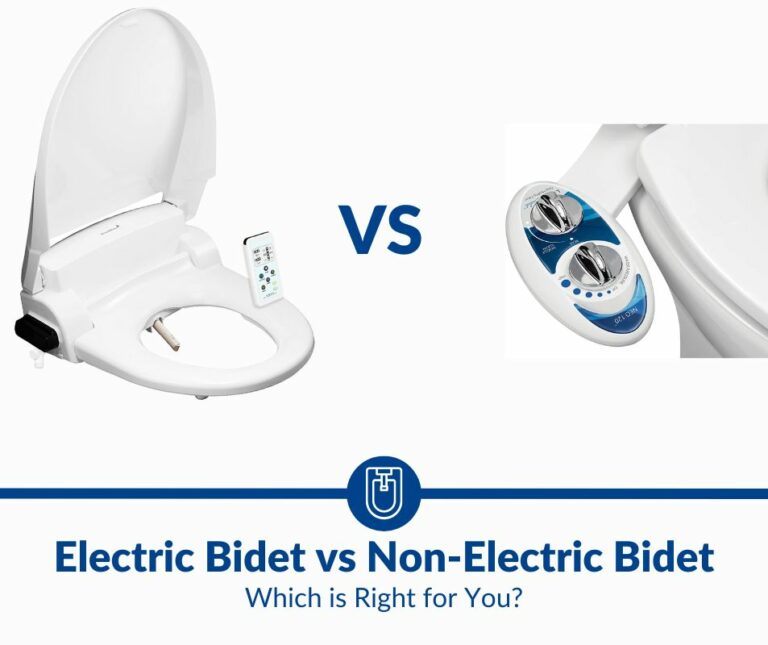How Much Does It Cost To Install a Bidet?
Bidets have been around for centuries, but they’re only now gaining popularity in the United States. If you’re considering installing a bidet in your home, the cost will probably be your first concern.
The average cost of a bidet installation is $1,090, with most homeowners spending between $800 and $1,560. However, the cost of a bidet installation can vary depending on several factors, including the type and brand of bidet you choose and the complexity of the installation.
In this article, I’ll give you all the information you need to know about the cost of installing a bidet in your home according to the type and brand of the bidet. I’ll also highlight the pros and cons of installing a bidet and whether it is a good idea to do it yourself.
A Complete Breakdown of Bidet Installation Costs
Bidets are a more hygienic alternative to toilet paper. They also remove some of the cost and hassle of replacing rolls. However, installing a bidet can also be a significant expense.
The average cost of installing a bidet is $1,090. The least expensive option is $400, while the most expensive option goes all the way up to $2500.
The bidet fixture is always the most pricey component of a new bidet installation, ranging from $220 to $530. It costs twice as much as the average toilet.
The final cost will depend on two main factors: the type of bidet you choose and the complexity of the installation.
The Cost of a Bidet by Type
There are different types of bidets to choose from: bidet toilet seats, bidet attachments, standalone bidets, bidet toilets, and bidet spray attachments. Each one comes with different installation costs.
Standalone Bidet
A standalone bidet uses a stream of water to cleanse your backside and genitalia after using the toilet. Unlike some integrated bidet toilet seat models, a standalone bidet does not require any electrical connection. Standalone bidets are operated via a simple knob or lever that controls the water flow.
The cost of the standalone bidet is approximately $220, but the installation can range anywhere from $500 to $1,500. If you choose to have a professional install the bidet, the total cost will be closer to $1,180. This price includes the cost of labor as well as any other additional installation items.
Bidet Toilet
Bidet toilets are standard toilets that are modified to include built-in bidets. Depending on the features, you may need the assistance of a plumber and an electrician to install and wire a bidet toilet.
Depending on the installation’s complexity, the bidet toilet’s price can range anywhere from $1,200 to $2,000 or even higher. The average cost of installation is anywhere around $1,500.
The good news is that you may be able to acquire a discount from your state or local utility provider to cover the cost of the installation of a bidet toilet, which can bring the total cost down to about $1,000.
Bidet Toilet Seat
A bidet toilet seat, also known as a washlet, is a hygiene tool installed on your regular toilet seat. It is designed to clean your intimate areas after using the toilet. The water pressure and temperature are controlled, and the nozzle is usually made of metal or plastic.
The cost of a bidet toilet seat starts at around $100. However, the installation cost can range from $170 to $2,650. The installation cost will depend on the type of bidet toilet seat you choose as well as the complexity of the installation.
Bidet Attachment
Bidet attachments are separate fixtures that go between your toilet and toilet seat. They use water to clean your bottom after you go to the bathroom, and most models also have a self-cleaning feature.
Bidet attachments are in various styles and designs to match your bathroom décor. They’re relatively easy to install—most models can be installed in under an hour.
Generally, installing a bidet attachment ranges from $80 to $120. However, if you want a bidet attachment with a water heating feature, the cost can go above $120.
Bidet Spray Attachment
A bidet spray attachment is a hand-operated spray arm that connects to the toilet’s water supply. The user can then clean themselves with water after using the toilet without needing toilet paper.
Bidet spray attachments come in many different sizes, shapes, and colors. They are usually made of plastic or metal, and some even come with a built-in heater. Purchasing and installing a bidet spray attachment will cost between $100 and $300.
The Cost of a Bidet by Brand
There are many different brands of bidet seats on the market, ranging in price from around $75 to $1200. The cost of a bidet seat depends largely on the brand and the features it offers. Some of the most popular brands include Brondell, Tushy, Eco Jet, and Kohler.
Let’s take a closer look at some of these brands.
Kohler
Kohler is one of the leading manufacturers of bidets, and their high-end bidets are some of the most expensive on the market. However, they offer a wide range of products to suit all budgets.
Kohler bidets are available in manual and electric models and come with various amenities, such as heated seats, remote control operation, warm water cleansing, and warm air drying.
Kohler bidet installation costs can range from $40–$1,200 depending on the type of bidet and the features chosen. The average cost for a basic model is around $800. Luxury models with additional features can cost above $1,200. Installation costs will also vary depending on the plumber’s fees.
Toto
Toto bidets are almost always powered by electricity, which means that they come with a variety of convenient features, including:
- Automatic deodorizing
- LED nightlights
- Heated seats
- Adjustable water pressure
- Adjustable water temperature
The price of having a Toto bidet professionally installed in your home can range from $300 to $1,200, with the typical price being around $750.
Brondell
The Brondell bidet is a high-quality, easy-to-use bidet that offers a variety of features to meet your needs. The bidet has an endless warm water heating system, seven nozzle positions, and a dual aerated wash spray with three spray widths and water pressure settings. The bidet also features a self-cleaning mode, which sanitizes the nozzle after each use.
Installation costs for Brondell bidets typically fall between $400–$700, with an average cost of around $550.
The total cost of installation will, however, depend on the specific model of bidet you choose, as well as the plumber or contractor you use.
Tushy
Tushy bidets are one of the most popular brands in the market. Most Tushy bidets do not require electricity or plumbing, although they also make some electric models.
Electric Tushy bidets come with an automatic self-cleaning nozzle. Most Tushy bidets have optimized pressure and angle control for making a targeted spray.
Tushy installation costs range from $100 to $200, with an average of $150.
Eco Jet
The Eco Jet bidet sprayer is a handheld, electronic gadget filled with cold or warm water and used to gently clean your private areas you use the restroom.
The Eco Jet is the least expensive form of a bidet. The cost of installing an Eco Jet bidet ranges from $40 to $60, with an average cost of $50.
Omigo
Omigo bidets are the world’s thinnest bidets! They usually have a sleek, minimal design that is perfect for any bathroom and are available in both round and elongated models.
What sets Omigo apart from other bidets is their perfect wash. The front and rear nozzles are separate, so you can customize your wash experience. The rear nozzles are adjustable, so you can choose the perfect angle for your comfort. The installation cost of Omigo bidets ranges from $75 to $600, with an average cost of $340.
DIY vs. Professional Plumber
Maybe you’re convinced that you want a bidet in your bathroom, but how should you go about it? Do you need to call a professional plumber or can you do it yourself?
If you are handy and have the time, then doing it yourself can be a great option. However, hiring a professional may be the better option if you are not confident in your DIY skills or don’t have the time.
It’s also important to note that some bidet options, such as an attachment, are DIY-friendly, while others, such as standalone or toilet bidets, require the skills of a trained plumber. If not trained, it’s best to leave it to the professionals.
How Much Do Bidets Contribute To Monthly Water Costs?
Typically, a single bidet usage will only require around an eighth of a gallon (0.47 liters) of water. A bidet uses roughly 2 gallons (7.57 liters) of water daily, based on the average daily use of 15 minutes. A bidet will increase your monthly water bill by around $0.60 on average.
This is a fairly insignificant sum compared to the price of tissue paper. Nearly thirty percent of all the water used indoors is used for flushing toilets.
A typical individual consumes about 3,000 gallons (11,356 liters) of water each month, which results in a bill of $45 for water utilities.
Do Home Insurance Policies Cover Bidets?
If you’re considering purchasing a bidet or have already installed one in your bathroom, you may wonder if your home insurance policy will cover it. Unfortunately, the answer is most likely no.
Bidets are considered medical devices, and most home insurance policies exclude coverage for medical devices. In addition, many home insurance policies have a limit on the amount they will pay for any single item. So even if your policy covered bidets, the coverage would likely be very limited.
So, what can you do to have a bidet in your home? You could try to get a standalone insurance policy for your bidet, but that could be difficult and expensive. You could simply hope your home insurance policy covers bidets, but don’t count on it.
Is It Worth It To Install a Bidet in Your Home
When you’re considering a home improvement, your mind usually goes to the cost and time involved. But one thing that is often overlooked is the impact the improvement will have on your daily life.
The cost and the time involved in installing a bidet are significant, but you can’t ignore their benefits.
Pros of Using a Bidet
Bidets Are Environmental Friendly
Bidets are environmentally friendly for several reasons. They save water, reduce the amount of toilet paper used, and can even save energy.
The average person uses about 57 sheets of toilet paper per week, which equals about 27 gallons (102 liters) of water per week. A bidet uses about an eighth of a gallon of water per flush. That means that for every 16 flushes, you’re using the same amount of water as you would if you used toilet paper for just one day.
Toilet paper also requires a lot of energy and resources to produce. It’s made from trees that must be grown, harvested, and transported. The trees are then turned into pulp and made into paper. All of this uses a lot of water and creates pollution.
Bidets use far less water and energy than toilet paper, making them a more environmentally friendly choice. If you’re looking for ways to reduce your environmental impact, then using a bidet is a great place to start!
Bidets Are More Hygienic Than Toilet Paper
The most obvious benefit of using bidets is that they are much more hygienic than toilet paper, and there are several reasons why.
When using a bidet, your hands are less likely to come into contact with fecal matter, which means you will prevent the spread of bacteria. Bidets also decrease the amount of bacteria in your genital area.
Bidets can help you to avoid UTIs and other infections. Toilet paper can irritate your skin and allow germs to enter your body, while bidet sprays are much more gentle.
Most Bidets Provide Warm Washing and Drying Functionalities
Warm water washing is more comfortable and can help to soothe any irritation or discomfort. Warm air drying is also more effective than toilet paper in preventing lingering moisture. Besides being more effective than toilet paper, these functions may also make your bathroom experience a bit more pleasant.
Bidets Mitigate Certain Medical Conditions
Bidets can help mitigate medical conditions such as hemorrhoids, anal fissures, and prostatitis.
While there is no proof that bidets can make these conditions disappear, medical evidence suggests they can provide relief. If you suffer from any of these conditions, it might be worth trying a bidet.
Cons of Using a Bidet
It Takes Time To Know How To Use a Bidet
Bidets can be a little confusing to use if you’ve never used one before. Here are some factors that add to the confusion:
- There are many different types of bidets, so it can be confusing to know how each one is used.
- You need to find the right position to use the bidet, which can take a bit of trial and error.
- It takes time to get used to the feeling of water shooting up your butt.
But don’t worry. Once you get the hang of it, you’ll love your bidet!
Some Bidets Require Plumbing and Electricity
Most bidets require plumbing and some are connected to an electrical outlet. Some versions run on batteries.
Using bidets with many advanced features can increase your regular energy costs quite a bit. However, traditional bidets only need plumbing to work.
Standalone Bidets Take Up a Lot of Bathroom Space
While standalone bidets can be installed relatively easily, they do take up a fair amount of space in your bathroom.
If you have a small bathroom, you might want to reconsider installing a standalone bidet. You could choose a bidet toilet seat or a bidet attachment instead.
Bidets Can Spread Infections if Not Used Correctly
While there’s good reason to believe that bidets are a more hygienic way to clean oneself after using the toilet, there is some concern that they can spread infections if not used correctly. Bidets work by spraying a stream of water onto your anus and genitals, which helps to clean them.
However, if the stream of water is not aimed properly, it can cause fecal matter and other bacteria to be sprayed onto your skin. This can lead to issues such as urinary tract infections, vaginal infections, and gastroenteritis.
It is important to use bidets correctly to avoid any potential health risks. Ensure to aim the water stream correctly, and always wash your hands afterward.
Conclusion
The cost of installing a bidet varies depending on the type of bidet and the complexity of the installation. The average cost is $1090, with most homeowners paying from $800 to $1560.
If you’re on a budget, consider getting a bidet attachment. It will require minimal plumbing. On the other hand, you can get a bidet with advanced features such as temperature control and warm air drying.







